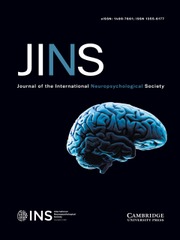Article contents
Comparing the predictive validity of four MCI definitions for incident dementia in demographically diverse community-dwelling individuals: Results from the Einstein Aging Study (EAS)
Published online by Cambridge University Press: 27 December 2024
Abstract
Research examining (MCI) criteria in diverse and/or health-disparate populations is limited. There is a critical need to investigate the predictive validity for incident dementia of widely used MCI definitions in diverse populations.
Eligible participants were non-Hispanic White or Black Bronx community residents, free of dementia at enrollment, with at least one annual follow-up visit after baseline. Participants completed annual neurological and neuropsychological evaluations to determine cognitive status. Dementia was defined based on DSM-IV criteria using case conferences. Cox proportional hazard models assessed predictive validity for incident dementia of four specific MCI definitions (Petersen, Jak/Bondi, number of impaired tests, Global Clinical Ratings) at baseline, controlling for age, sex, education, and race/ethnicity. Time-dependent sensitivity and specificity at 2–7 years for each definition, and Youden’s index were calculated as accuracy measures.
Participants (N = 1073) ranged in age from 70 to 100 (mean = 78.4 ± 5.3) years at baseline. The sample was 62.5% female, and educational achievement averaged 13.9 ± 3.5 years. Most participants identified as White (70.0%), though Black participants were well-represented (30.0%). In general, MCI definitions differed in sensitivity and specificity for incident dementia. However, there were no significant differences in Youden’s index for any definition, across all years of follow-up.
This work provides an important step toward improving the generalizability of the MCI diagnosis to underrepresented/health-disparate populations. While our findings suggest the studied MCI classifications are comparable, researchers and clinicians may choose to consider one method over another depending on the rationale for evaluation or question of interest.
Keywords
Information
- Type
- Research Article
- Information
- Journal of the International Neuropsychological Society , Volume 31 , Issue 1 , January 2025 , pp. 32 - 41
- Copyright
- © The Author(s), 2024. Published by Cambridge University Press on behalf of International Neuropsychological Society
References
- 3
- Cited by

